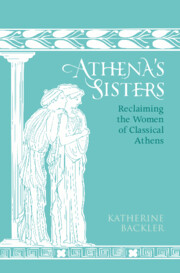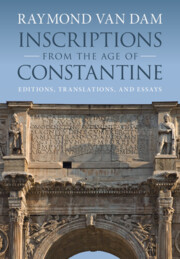Refine search
Actions for selected content:
149391 results in Classical Studies

The Astronomy of Hipparchus
- An Annotated Translation of and Introduction to the Commentary on the Phenomena of Aratus and Eudoxus
- Coming soon
-
- Expected online publication date:
- April 2026
- Print publication:
- 30 April 2026
-
- Book
- Export citation
Reading Linear B
- Coming soon
-
- Expected online publication date:
- April 2026
- Print publication:
- 30 April 2026
-
- Textbook
- Export citation
Women, Wealth and Power in the Roman Republic
- Coming soon
-
- Expected online publication date:
- March 2026
- Print publication:
- 31 March 2026
-
- Book
- Export citation

The Archaic and Early Classical Greek World
- Using Coins as Sources
- Coming soon
-
- Expected online publication date:
- March 2026
- Print publication:
- 31 March 2026
-
- Textbook
- Export citation

The Judgment of the Provinces
- The Roman Empire and the Origins of Law and Society
- Coming soon
-
- Expected online publication date:
- March 2026
- Print publication:
- 31 March 2026
-
- Book
- Export citation

Latin Poetry Across Languages
- Adventures in Allusion, Translation and Classical Tradition
- Coming soon
-
- Expected online publication date:
- March 2026
- Print publication:
- 31 March 2026
-
- Book
- Export citation

Naming New Things and Concepts in Early Modern Science
- The Case of Natural History
- Coming soon
-
- Expected online publication date:
- March 2026
- Print publication:
- 31 March 2026
-
- Book
- Export citation

Calendar, Cult, and Law in Rome to the Age of Augustus
- Coming soon
-
- Expected online publication date:
- March 2026
- Print publication:
- 31 March 2026
-
- Book
- Export citation
Myth, Text and Image in Ancient Mesopotamia
- A Narrative Reading of the World
- Coming soon
-
- Expected online publication date:
- March 2026
- Print publication:
- 31 March 2026
-
- Book
- Export citation

Athena's Sisters
- Reclaiming the Women of Classical Athens
- Coming soon
-
- Expected online publication date:
- February 2026
- Print publication:
- 12 February 2026
-
- Book
- Export citation

Aristotelian Ontological Priority and Metaphysical Grounding
- Coming soon
-
- Expected online publication date:
- February 2026
- Print publication:
- 28 February 2026
-
- Element
- Export citation

Inscriptions from the Age of Constantine
- Editions, Translations, and Essays
- Coming soon
-
- Expected online publication date:
- February 2026
- Print publication:
- 28 February 2026
-
- Book
- Export citation
Visiting the Oracle at Dodona
- Contexts of Unknowing in Ancient Greek Religion
- Coming soon
-
- Expected online publication date:
- February 2026
- Print publication:
- 28 February 2026
-
- Book
- Export citation

The Origins of Democratic Thinking
- The Invention of Politics in Classical Athens
- Coming soon
-
- Expected online publication date:
- February 2026
- Print publication:
- 28 February 2026
-
- Book
- Export citation

Civil and Uncivil Disobedience
- Coming soon
-
- Expected online publication date:
- February 2026
- Print publication:
- 28 February 2026
-
- Element
- Export citation

Studies in Greek Literature
- Coming soon
-
- Expected online publication date:
- February 2026
- Print publication:
- 28 February 2026
-
- Book
- Export citation

Studies in Greek Literature
- Coming soon
-
- Expected online publication date:
- February 2026
- Print publication:
- 28 February 2026
-
- Book
- Export citation

Premodern Economies
- A Global Perspective
- Coming soon
-
- Expected online publication date:
- February 2026
- Print publication:
- 28 February 2026
-
- Book
- Export citation
Paul's Letter Openings
- An Analysis of High-register Language
- Coming soon
-
- Expected online publication date:
- February 2026
- Print publication:
- 28 February 2026
-
- Book
- Export citation

The Cambridge Introduction to the Old Testament
- Coming soon
-
- Expected online publication date:
- February 2026
- Print publication:
- 28 February 2026
-
- Textbook
- Export citation
